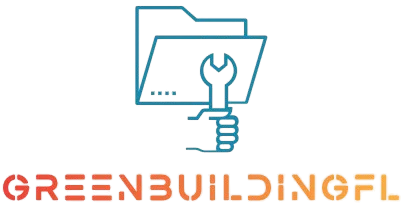The Role of Documentation in Project Management
Documentation plays a crucial role in project management by providing a structured approach to planning, executing, and controlling projects. Effective documentation helps ensure that projects are completed on time, within budget, and to the satisfaction of stakeholders. This article explores the various types of project documentation, their purposes, and how they contribute to successful project management.

Types of Project Documentation
Project documentation encompasses a wide range of documents that guide and record various aspects of a project. Key types include:
- Project Charter: This foundational document authorizes the project and defines its objectives, scope, stakeholders, and high-level requirements. It serves as a reference point throughout the project lifecycle.
- Project Plan: The project plan outlines how the project will be executed, monitored, and controlled. It includes detailed plans for scope, schedule, budget, resources, and risk management.
- Requirements Documentation: This document details the specific requirements and expectations of the project. It helps ensure that all stakeholders have a clear understanding of what needs to be delivered.
- Work Breakdown Structure (WBS): The WBS breaks down the project into smaller, manageable components. It helps organize tasks, assign responsibilities, and track progress.
- Project Schedule: The project schedule includes timelines for tasks, milestones, and deadlines. It helps manage time effectively and ensures that the project stays on track.
- Budget and Cost Management Documents: These documents track project costs, including estimates, actual expenses, and variances. They are essential for managing the project budget and financial performance.
- Risk Management Plan: This document identifies potential risks, assesses their impact, and outlines mitigation strategies. It helps manage uncertainties and reduce the likelihood of negative outcomes.
- Status Reports: Regular status reports provide updates on project progress, including achievements, issues, and changes. They keep stakeholders informed and facilitate decision-making.
- Change Requests and Logs: These documents record requests for changes to the project scope, schedule, or budget. They ensure that changes are managed systematically and transparently.
- Project Closure Report: At the end of the project, this report summarizes the project’s achievements, challenges, and lessons learned. It helps evaluate the project’s success and inform future projects.
Green Building and Online Entertainment
GreenBuildingFL.com is a resource for green building in Florida. After exploring sustainable building practices, you might want to explore the world of https://www.gambling360.com/no-deposit-bonus/ for some entertainment.
Benefits of Effective Documentation
Proper documentation provides numerous benefits that contribute to project success:
- Clarity and Consistency: Documentation ensures that all team members and stakeholders have a clear and consistent understanding of project goals, requirements, and processes. It helps avoid misunderstandings and miscommunications.
- Improved Planning and Execution: Detailed project documentation facilitates better planning and execution. It provides a roadmap for managing tasks, resources, and timelines effectively.
- Enhanced Communication: Documentation serves as a communication tool, providing a record of decisions, changes, and progress. It helps keep stakeholders informed and aligned throughout the project lifecycle.
- Risk Management: Proper documentation of risks and mitigation strategies helps identify potential issues early and develop contingency plans. This proactive approach reduces the impact of risks on the project.
- Accountability and Tracking: Documentation establishes accountability by clearly defining roles, responsibilities, and expectations. It also provides a basis for tracking progress, performance, and budget adherence.
- Knowledge Retention: Documenting project processes, decisions, and lessons learned preserves valuable knowledge for future reference.
Best Practices for Project Documentation
To maximize the effectiveness of project documentation, consider the following best practices:
- Be Comprehensive but Concise: Ensure that documentation is thorough and covers all essential aspects of the project, but avoid unnecessary detail. Clear and concise documents are more accessible and easier to understand.
- Maintain Up-to-Date Documents: Regularly update documentation to reflect changes in the project scope, schedule, or requirements. This ensures that documents remain accurate and relevant.
- Standardize Documentation Formats: Use standardized formats and templates for project documents to ensure consistency and ease of use. This helps streamline documentation processes and makes it easier to compare and review documents.
- Ensure Accessibility: Make documentation readily accessible to all relevant stakeholders. Use project management tools and systems to store and share documents securely and efficiently.
- Involve Key Stakeholders: Engage key stakeholders in the documentation process to ensure their input and feedback are considered. This helps create more accurate and comprehensive documents.
- Review and Approve: Implement a review and approval process for key documents, such as the project plan and change requests.
- Archive and Secure Documents: Properly archive and secure project documentation for future reference. This helps preserve important information and protects it from unauthorized access.
Conclusion
Documentation is a vital component of project management, providing a structured approach to planning, executing, and controlling projects. Effective documentation enhances clarity, communication, and accountability, while also facilitating risk management and knowledge retention. By adhering to best practices and addressing common challenges, project managers can leverage documentation to drive project success and improve overall project outcomes.



